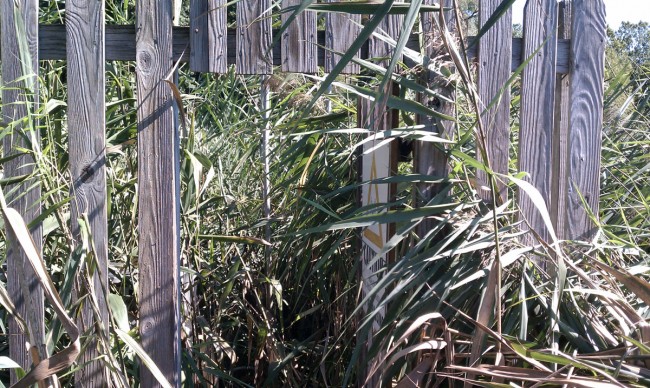There has been lots of hand wringing and ink spilled regarding the sorry state of affairs in the senior service. AM is plagued with problems; interference, poor bandwidth, etc. To that end, the NAB has launched studies and initiatives and hired all sorts of pricey consultants to consult with. Here is my own AM improvement plan and it is rather simple:
- Clean up the transmitter site.
- Get rid of AM HD radio.
- Variable IF bandwidth receivers.
- Improve Programming.
How many of us have seen AM transmitter site dumps? Deferred maintenance, malfunctioning directional arrays, trees growing up on the ground system, flooded buildings and ATU’s, rusty towers, transmitters not a full power, ground system deteriorated or missing all together, just to list a few problems. Many AM transmitter sites are technical disasters. Think that these things have no bearing on the AM station’s signal? Think again.

Trees growing around the tower base can attenuate the signal by 30%. A comment from a well known engineering firm:
…Recently XXX field engineers had occasion to measure an AM station at XXXX kHz before and after removing vegetation in the vicinity. The station had a quarter-wave tower. The base area had grown up in brush and hardwood trees to a height of perhaps 30 feet (9m) and this extended from near the base across the entire ground system. After clearing (cutting, no ground system disturbance), the signal measured at some 16 locations on four radials went up a uniform amount of about 15% or 1.2 DB. That’s about a 30% increase in radiated power…
That is an inexpensive power boost and they didn’t even have to file with the FCC! A 1 – 2 dB power gain is pretty nice and can mean the difference between a listenable signal and static. How many times have I heard the lament that AM band is full of noise and not listenable. Certainly, there are major challenges in the urban listening environment. Putting forth a better signal will overcome some of this electrical noise.
There is a reason why engineering standards were developed for the physical plant; they work.
There is no cure for the noise that AM HD Radio puts out into the adjacent channels. This self interference benefits none, not even the station transmitting AM HD Radio. This dubious technology has proved itself a non-starter and should be discontinued. For smaller station owners, the cost of implementing AM HD Radio is prohibitive. Licensing of a proprietary modulation scheme, new transmitting equipment, specialized exciters plus any needed bandwidth improvements to AM antenna arrays can easily exceed $100,000.00. Unfortunately, it is often the small AM radio operators that are making a good showing, and serving their community of license and making money. These are the very stations that are hurt the most by adjacent channel AM HD Radio interference.
Receiver design over the last twenty to thirty years has been the greater issue with perceived low AM broadcast quality. AM receivers have an average bandwidth of just 3-4 KHz, which is slightly better than telephone quality. AM broadcasting has gotten a bad wrap because of this and there are many comments about how AM is “inferior quality” to FM. With a quality older receiver, AM can sound very good. Of course, the receiver manufactures all point adjacent channel interference as their rational for reducing IF bandwidth. Why not leave it in the hands of the user? The GE Superradio had this feature with a “wide” and “narrow” setting for AM reception. They worked remarkably well. A receiver could also be designed to automatically increase IF bandwidth at higher received signal strengths.
Finally, as the saying goes; Garbage in, Garbage out (GIGO). This holds true for many things including radio programming. Expecting that mediocre satellite syndicated news talk will garner great ratings and huge revenues is silly. For years and years, station owners have put minimal effort into AM radio and expected big returns. It is not working. AM stations that go against that trend; those with unique formats (Gasp! Music, on AM?), local content, and community oriented programming can and do succeed. They are fighting an up hill battle in both directions. With all of the business pressures from larger broadcast groups, interference issues and negative viewpoint on the viability of the AM band, one wonders how long they can last.
